DEBS FIRST FRIDAYS
Debs Test Plot
By Cody Porter
Volunteer
DATE: June 07 2024
TIME: 8:00am
︎︎WEATHER: Overcast for the first hour and half, then sunshine
︎PLANTS SIGHTINGS: Ripe fruit on Golden Currants - delicious, too ;). Everything is much bigger than when I was last there a couple months back, and certain pathways are now inaccessible and I’m ecstatic about it. It seems several bunches of native needle grasses have propagated on their own along the northeastern-most section of the plot. All the Walnut saplings are developing with little to no die-off as far as I can tell. Redberry fruit developing for summer arrival. Bush Monkey Flower looking great and not quite in dieback mode yet, like the Sages are gearing up to do. Heart Leaved Penstemon all looking healthy.
WEED SIGHTINGS: Lots of tall Italian thistle and robust yellow star thistle amidst the usual bed of now crisp grasses, including some tall wild oats. For as unwieldy and thorny the Italian thistles are, I didn’t notice them having too deep of roots or putting up much of a fight when pulled up.
︎HUMAN ACTIVITY: You’ll encounter the obligatory several piles of dog waste. No trash in the Test Plot itself but there’s always plenty at the trail’s entrance.
GENERAL NOTES: The ground was mostly so forgiving and soft that one could pull lots of weeds with minimal frustration. All the previously planted Bush Sunflower is outlined along the main trail with a carpet of dry grasses that I wish we’d get a handle on, but it’s a lot of tedious effort with stiff, dry soil to contend with. My vision for a fix is to get the grasses gone and then flood the area with native wildflower seeds when the wet season arrives, a la the Rainbow River + Field at Elysian Test Plot. From there I envision delicate pulling of weeds while the wildlflowers develop and in the long run sprout annually ever after. In short, where there were weeds lining the trails and native plants, there’s now wildflowers/perennials - Chia, Whispering Bells, Wild Canterbury Bells, Golden Yarrow, Poppies, Clarkia, Fiesta Flower, Lupine, Chinese Houses, Blue Dicks, Blue-Eyed Grass, Baby Blue Eyes, Cardinal Catchfly, Phacelias, Cryptantha, California Aster…Nothing that can’t be found at Griffith Park… MAXIMALISM.
For me, the secret is simply showing up - being there. Make the time for the land and beauty will follow. And by “beauty,” I mean the realization of positive intent. Appear, and you’ll discover improvements that can be made.
I subscribe to the belief that each weed plucked from the garden liberates vital resources, no matter how small of an amount, that can then be embraced by the chosen plants being raised - those gorgeous, gorgeous California natives! So in my book, no weeds allowed.
And when the ground, the soil, supports you in this endeavor, it’s a divine cooperation. To pinch at the base of a tuft of foreign grass or thistle and a tug brings it up roots and all, it’s a sensation that urges, “again.” So I do it again. Again. Again. Again and again. I become bloodthirsty and I toss the murdered invasives in a pile atop others still living in hopes of their own gradual demise through smothering.
And they’ll call to me, “hey, we didn’t ask to be here. We’re just doing the only thing we know how to do.” In a flash I respond, “yes, I hear you. Please try to see things my way. This is an act of love. The plants I’m supporting are much more in line with those that have served their vast evolutionary time and have the right to exist here, with those that fulfill their obligations to the other historic living beings that should also prosper here. You all take so much more than you give. Your understanding is sincerely appreciated.”
Then before I know it, the vision is complete and we have immaculate, clean ground to work with. Clean ground to cover with mulch until fresh natives can expand into it. But there must be vigilance. Weeds know how to revive and thrive. But if you can be there and you can disrupt their programming again and again, they’ll get the hint and vanish. Then you’ll be left with land that knows how to give, and does so with serious style.
Debs Test Plot
By Cody Porter
Volunteer
DATE: June 07 2024
TIME: 8:00am
︎︎WEATHER: Overcast for the first hour and half, then sunshine
︎PLANTS SIGHTINGS: Ripe fruit on Golden Currants - delicious, too ;). Everything is much bigger than when I was last there a couple months back, and certain pathways are now inaccessible and I’m ecstatic about it. It seems several bunches of native needle grasses have propagated on their own along the northeastern-most section of the plot. All the Walnut saplings are developing with little to no die-off as far as I can tell. Redberry fruit developing for summer arrival. Bush Monkey Flower looking great and not quite in dieback mode yet, like the Sages are gearing up to do. Heart Leaved Penstemon all looking healthy.
WEED SIGHTINGS: Lots of tall Italian thistle and robust yellow star thistle amidst the usual bed of now crisp grasses, including some tall wild oats. For as unwieldy and thorny the Italian thistles are, I didn’t notice them having too deep of roots or putting up much of a fight when pulled up.
︎HUMAN ACTIVITY: You’ll encounter the obligatory several piles of dog waste. No trash in the Test Plot itself but there’s always plenty at the trail’s entrance.
GENERAL NOTES: The ground was mostly so forgiving and soft that one could pull lots of weeds with minimal frustration. All the previously planted Bush Sunflower is outlined along the main trail with a carpet of dry grasses that I wish we’d get a handle on, but it’s a lot of tedious effort with stiff, dry soil to contend with. My vision for a fix is to get the grasses gone and then flood the area with native wildflower seeds when the wet season arrives, a la the Rainbow River + Field at Elysian Test Plot. From there I envision delicate pulling of weeds while the wildlflowers develop and in the long run sprout annually ever after. In short, where there were weeds lining the trails and native plants, there’s now wildflowers/perennials - Chia, Whispering Bells, Wild Canterbury Bells, Golden Yarrow, Poppies, Clarkia, Fiesta Flower, Lupine, Chinese Houses, Blue Dicks, Blue-Eyed Grass, Baby Blue Eyes, Cardinal Catchfly, Phacelias, Cryptantha, California Aster…Nothing that can’t be found at Griffith Park… MAXIMALISM.
For me, the secret is simply showing up - being there. Make the time for the land and beauty will follow. And by “beauty,” I mean the realization of positive intent. Appear, and you’ll discover improvements that can be made.
I subscribe to the belief that each weed plucked from the garden liberates vital resources, no matter how small of an amount, that can then be embraced by the chosen plants being raised - those gorgeous, gorgeous California natives! So in my book, no weeds allowed.
And when the ground, the soil, supports you in this endeavor, it’s a divine cooperation. To pinch at the base of a tuft of foreign grass or thistle and a tug brings it up roots and all, it’s a sensation that urges, “again.” So I do it again. Again. Again. Again and again. I become bloodthirsty and I toss the murdered invasives in a pile atop others still living in hopes of their own gradual demise through smothering.
And they’ll call to me, “hey, we didn’t ask to be here. We’re just doing the only thing we know how to do.” In a flash I respond, “yes, I hear you. Please try to see things my way. This is an act of love. The plants I’m supporting are much more in line with those that have served their vast evolutionary time and have the right to exist here, with those that fulfill their obligations to the other historic living beings that should also prosper here. You all take so much more than you give. Your understanding is sincerely appreciated.”
Then before I know it, the vision is complete and we have immaculate, clean ground to work with. Clean ground to cover with mulch until fresh natives can expand into it. But there must be vigilance. Weeds know how to revive and thrive. But if you can be there and you can disrupt their programming again and again, they’ll get the hint and vanish. Then you’ll be left with land that knows how to give, and does so with serious style.

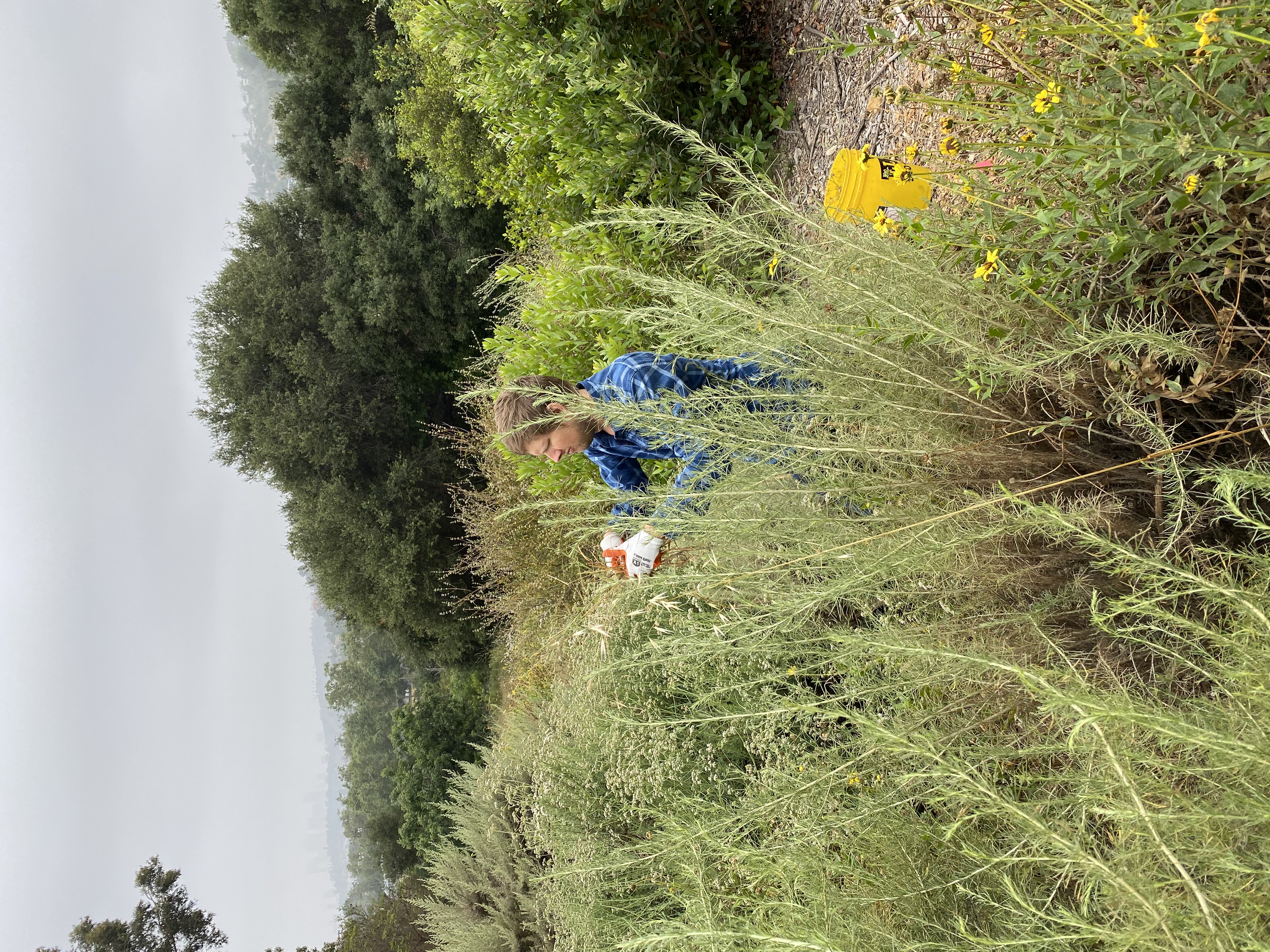
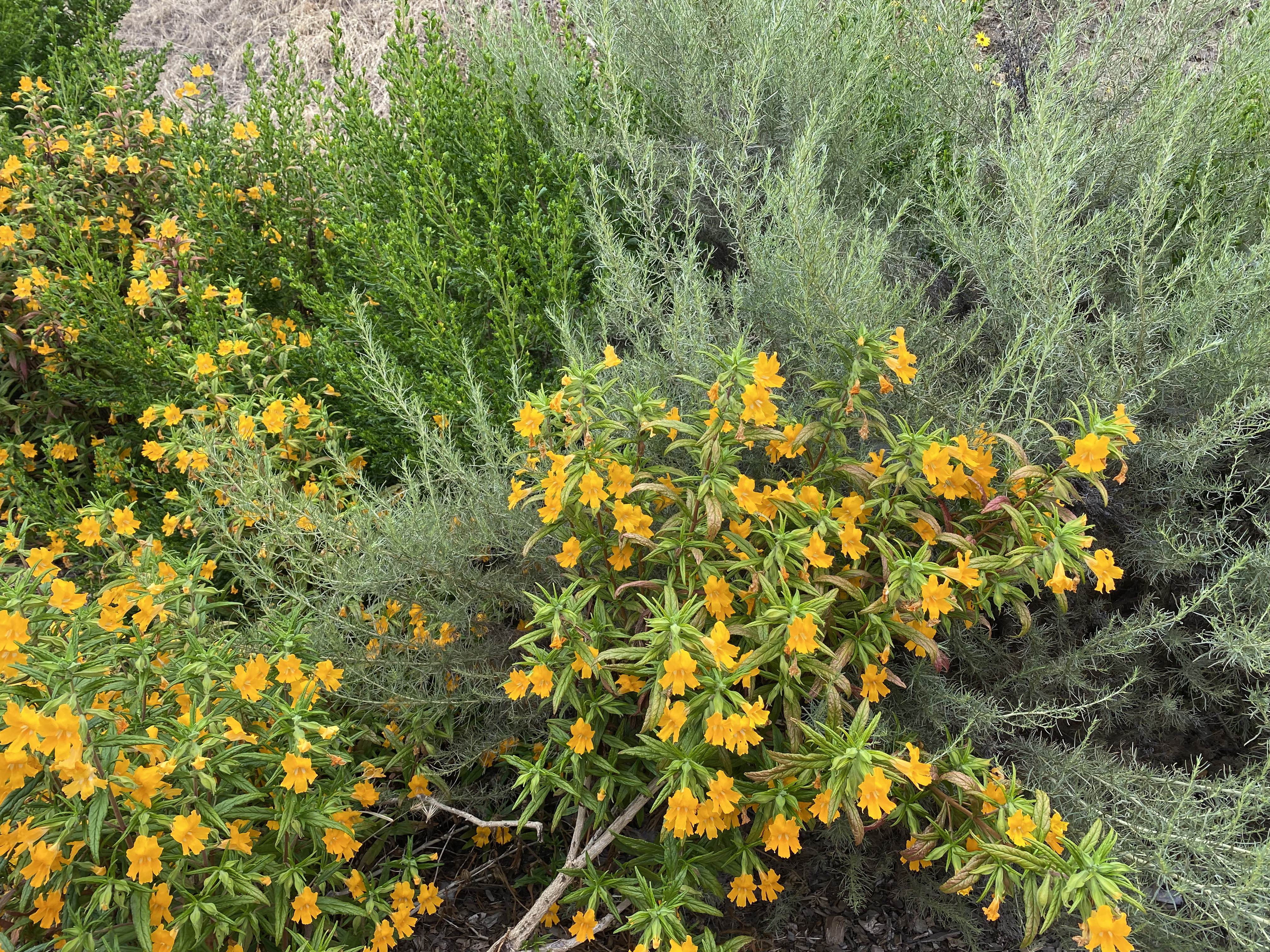


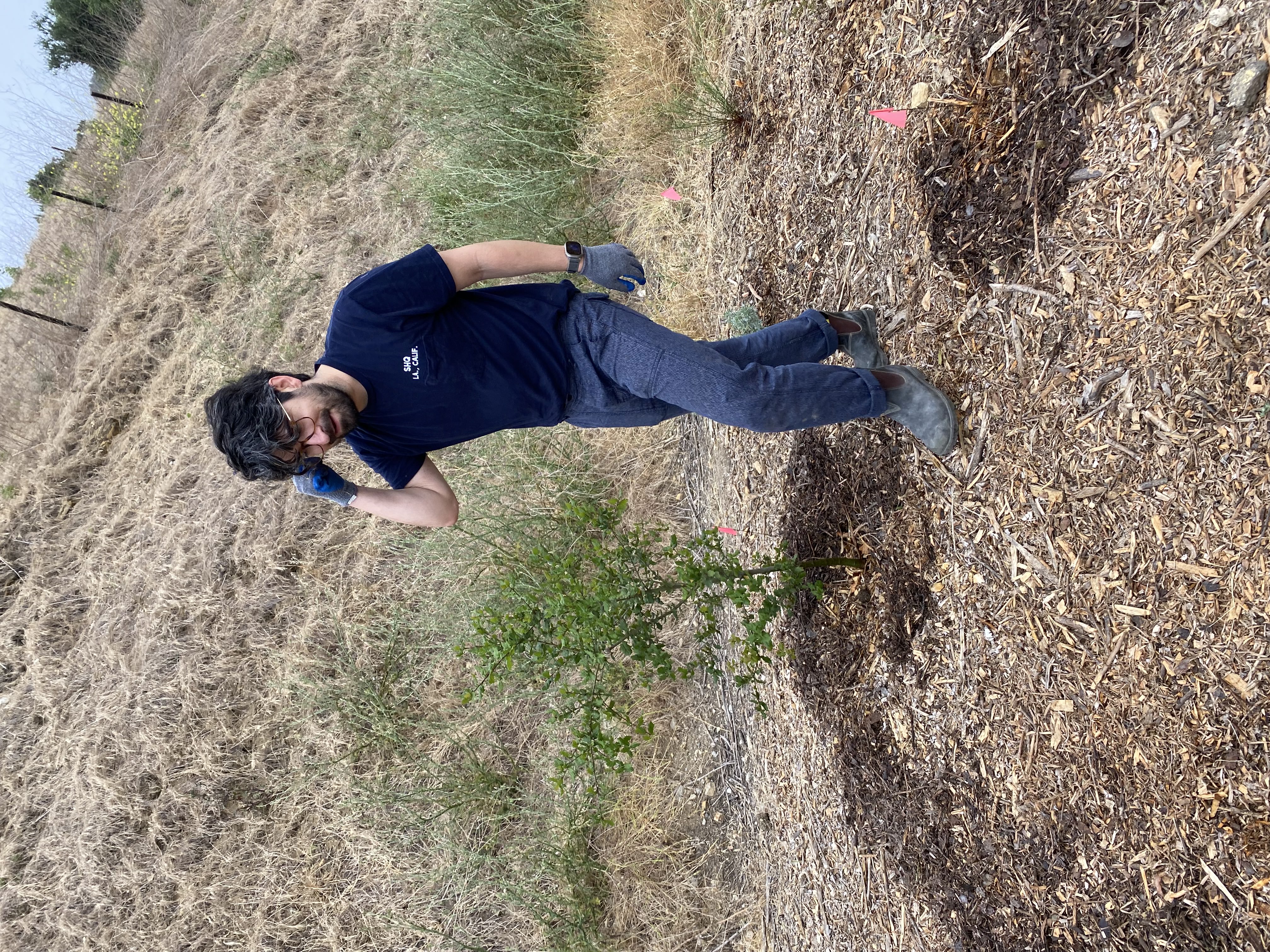
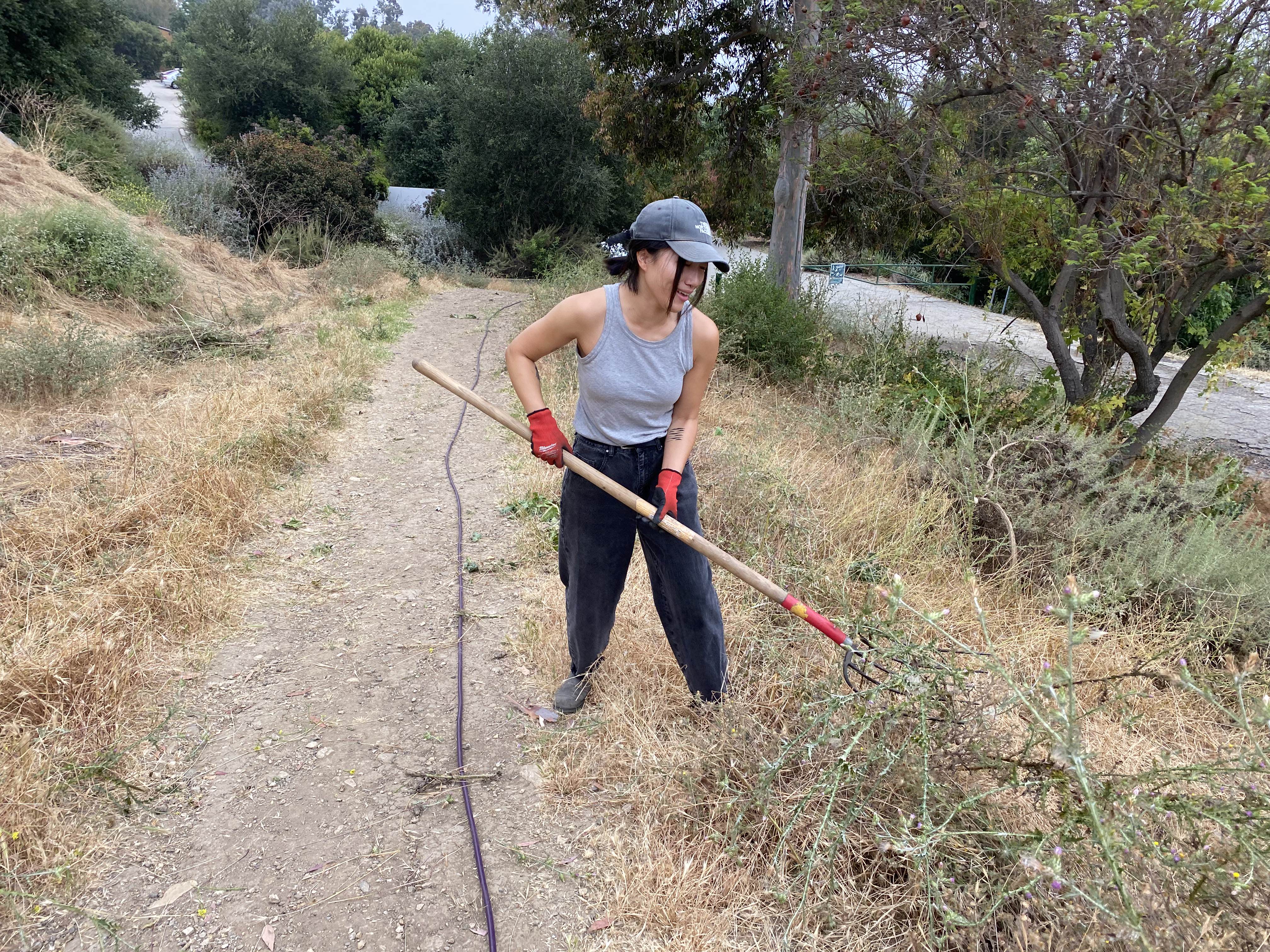
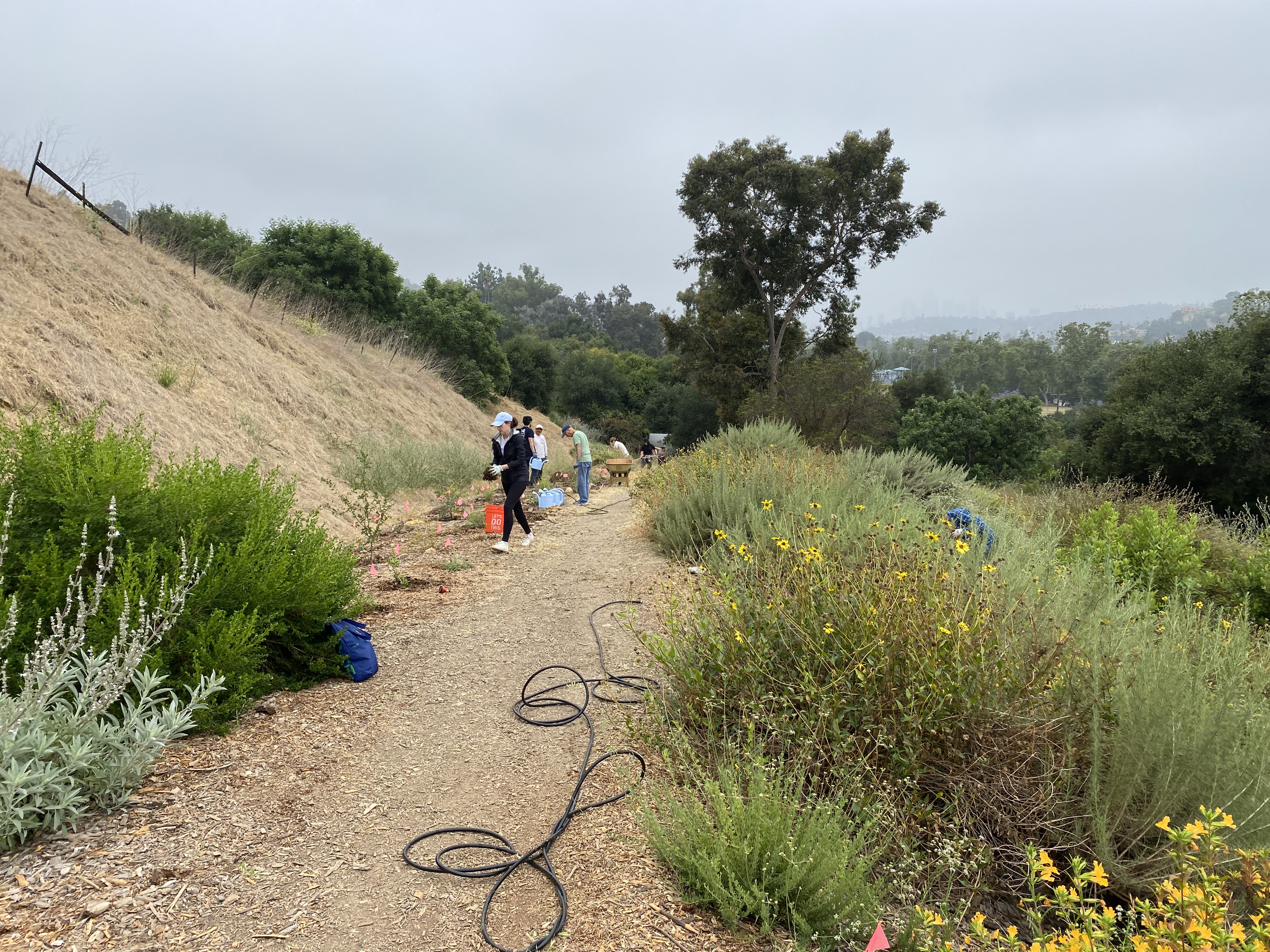
SUMMER FIELD SKETCHES
Debs Test Plot
By Hannah Pae
Debs Volunteer, Terremoto designer
DATE: July 10 2023
The atypical amount of rain this spring has resulted in some exciting lush growth as the soil underfoot gladly absorbs the extra moisture. The cool and dusky scent of CA sagebrush surrounds us as we pull milk snails off the stems and leaves of purple lupines that pop up amongst the salvias. On other days, we carefully free sprawling coyote brush and monkeyflower that have happily outgrown their protective gopher baskets. A desert centipede wriggles itself deep into bark mulch while wild cucumber drops its spiky lime green fruit and winds its tendrils through a bank of deep green toyon. The peaks of the San Gabriel Mountains are laden with snow in March when the Encelia flanking the trail up to the test plot starts to let out the first of its yellow flowers. By July, the snow has melted and the Encelia is in full ecstatic bloom.
The following is a series of field observations, memories, and moments collected from the past few months while volunteering at Debs Test Plot.
Debs Test Plot
By Hannah Pae
Debs Volunteer, Terremoto designer
DATE: July 10 2023
The atypical amount of rain this spring has resulted in some exciting lush growth as the soil underfoot gladly absorbs the extra moisture. The cool and dusky scent of CA sagebrush surrounds us as we pull milk snails off the stems and leaves of purple lupines that pop up amongst the salvias. On other days, we carefully free sprawling coyote brush and monkeyflower that have happily outgrown their protective gopher baskets. A desert centipede wriggles itself deep into bark mulch while wild cucumber drops its spiky lime green fruit and winds its tendrils through a bank of deep green toyon. The peaks of the San Gabriel Mountains are laden with snow in March when the Encelia flanking the trail up to the test plot starts to let out the first of its yellow flowers. By July, the snow has melted and the Encelia is in full ecstatic bloom.
The following is a series of field observations, memories, and moments collected from the past few months while volunteering at Debs Test Plot.



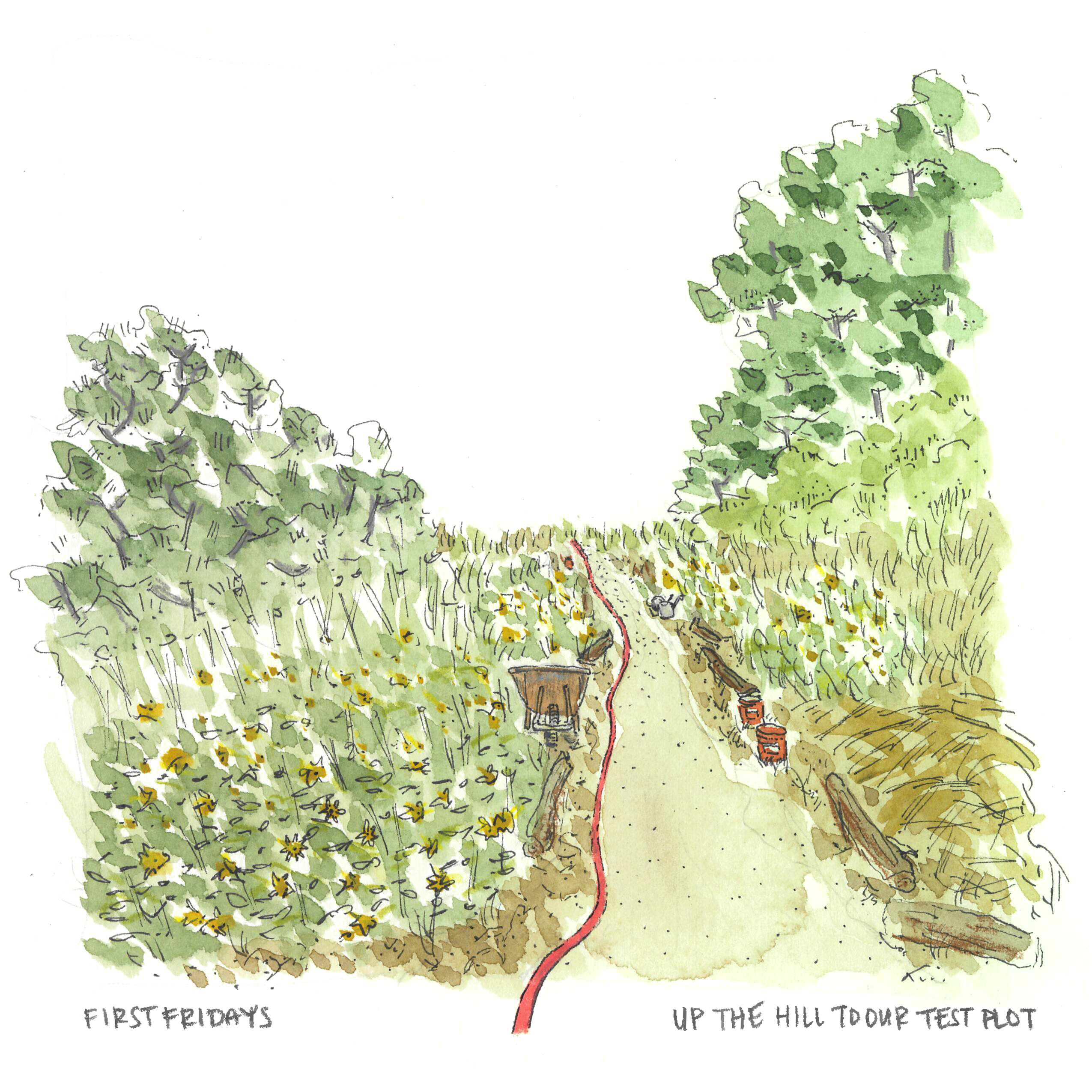

SPRING AT DEBS
Field Notes
By Adrian Tenney
Debs volunteer, Terremoto designer
Arriving early before there is any direct sun on the plots, but when there are lots of birds chirping and fluttering about. As the sun slowly creeps up and covers the shrubs in light I can see them all reaching for the sky and opening their spring blossoms. The spring is the most exciting time to visit - everything is fresh from the rain, and not yet dry from the excessive heat.
Field Notes
By Adrian Tenney
Debs volunteer, Terremoto designer
March 10 2023
Arriving early before there is any direct sun on the plots, but when there are lots of birds chirping and fluttering about. As the sun slowly creeps up and covers the shrubs in light I can see them all reaching for the sky and opening their spring blossoms. The spring is the most exciting time to visit - everything is fresh from the rain, and not yet dry from the excessive heat.
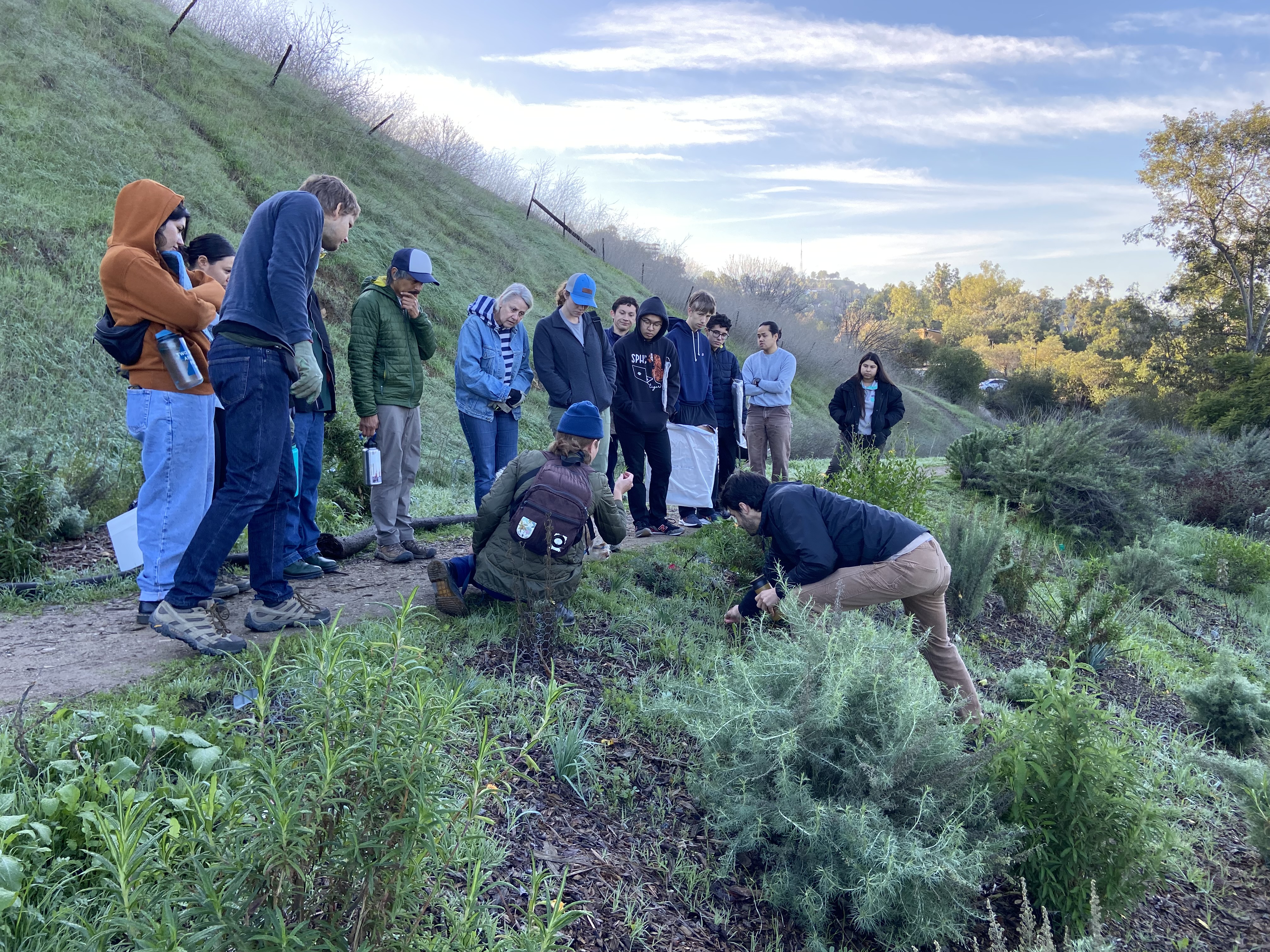
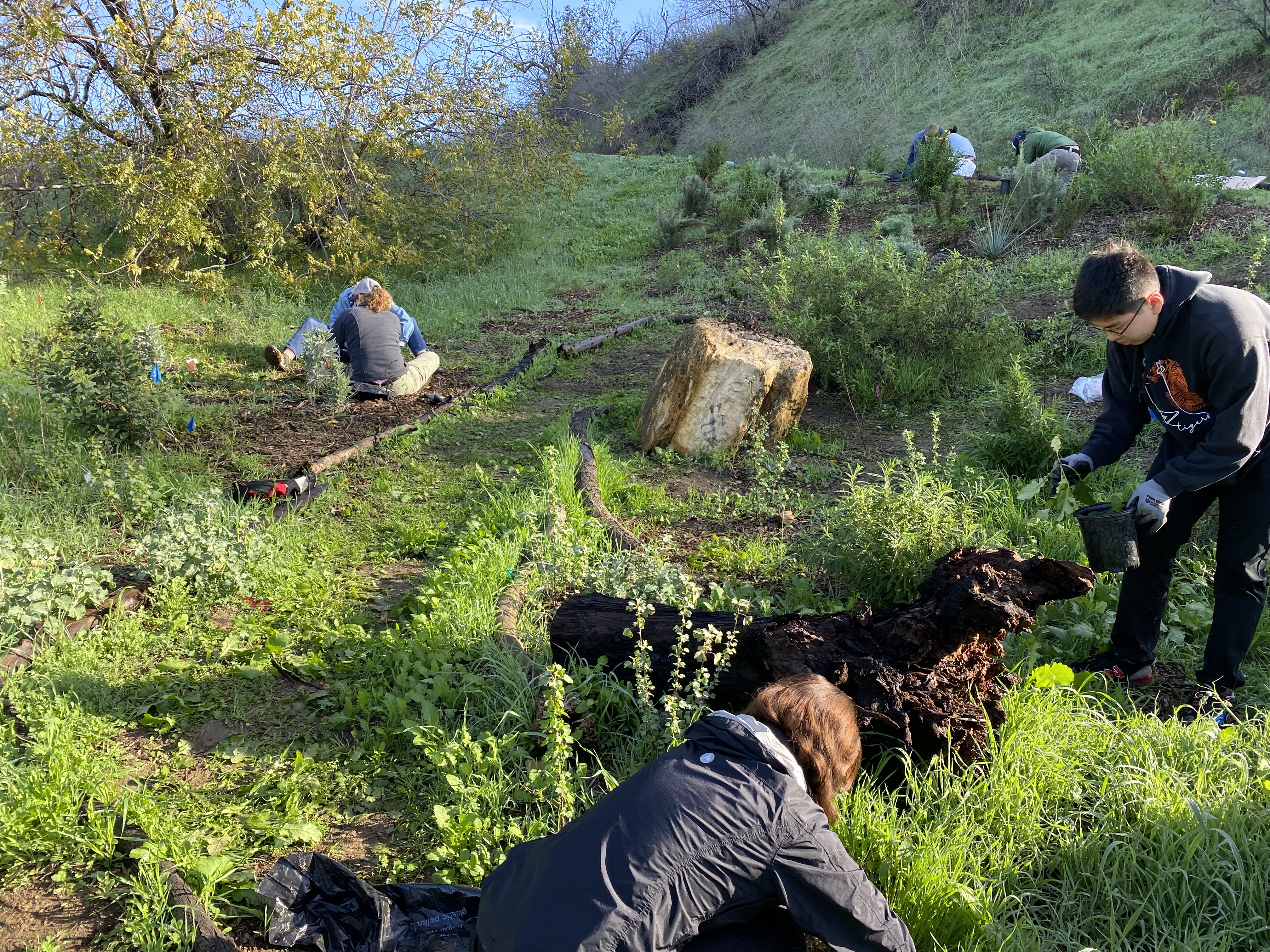
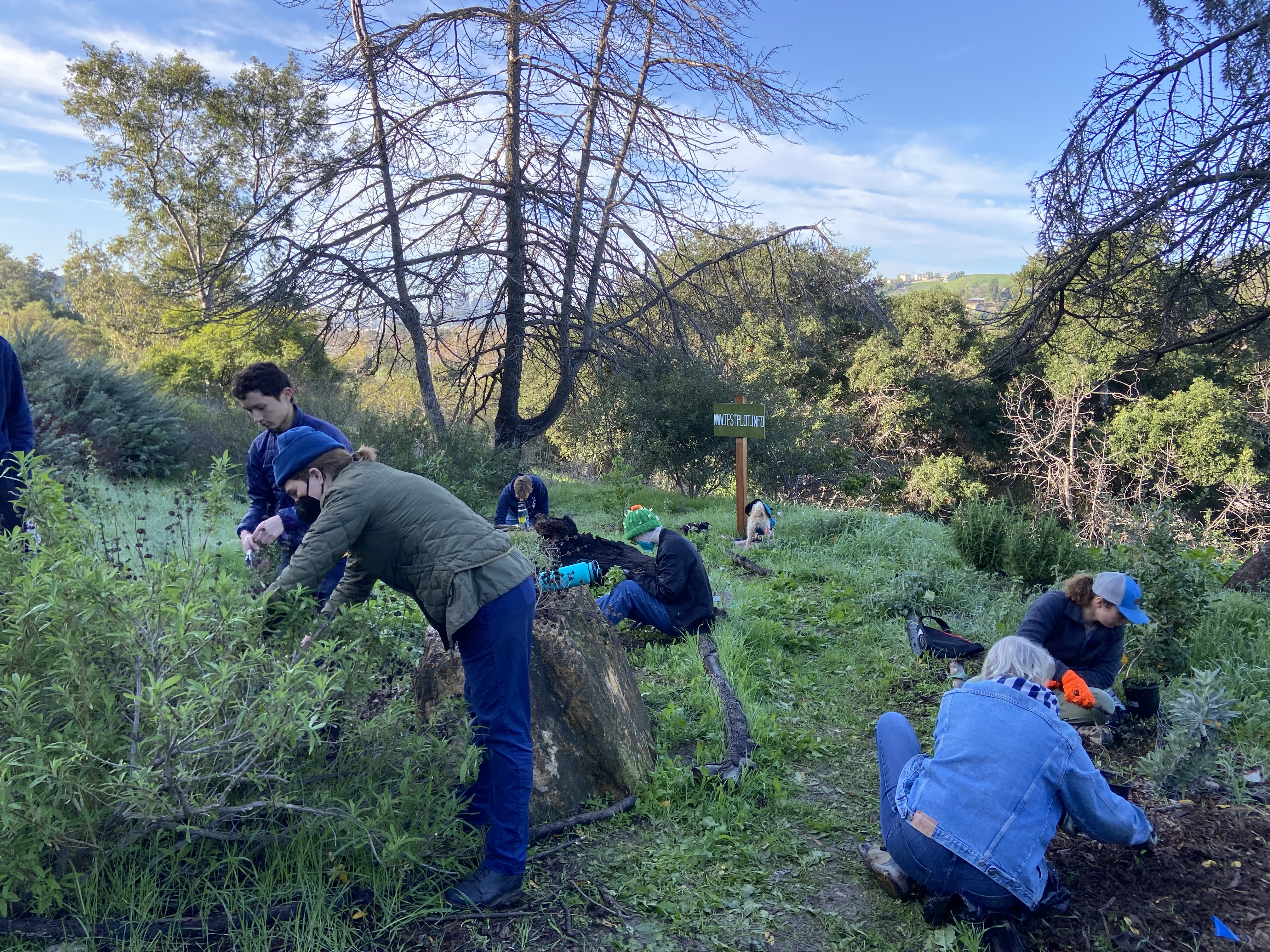
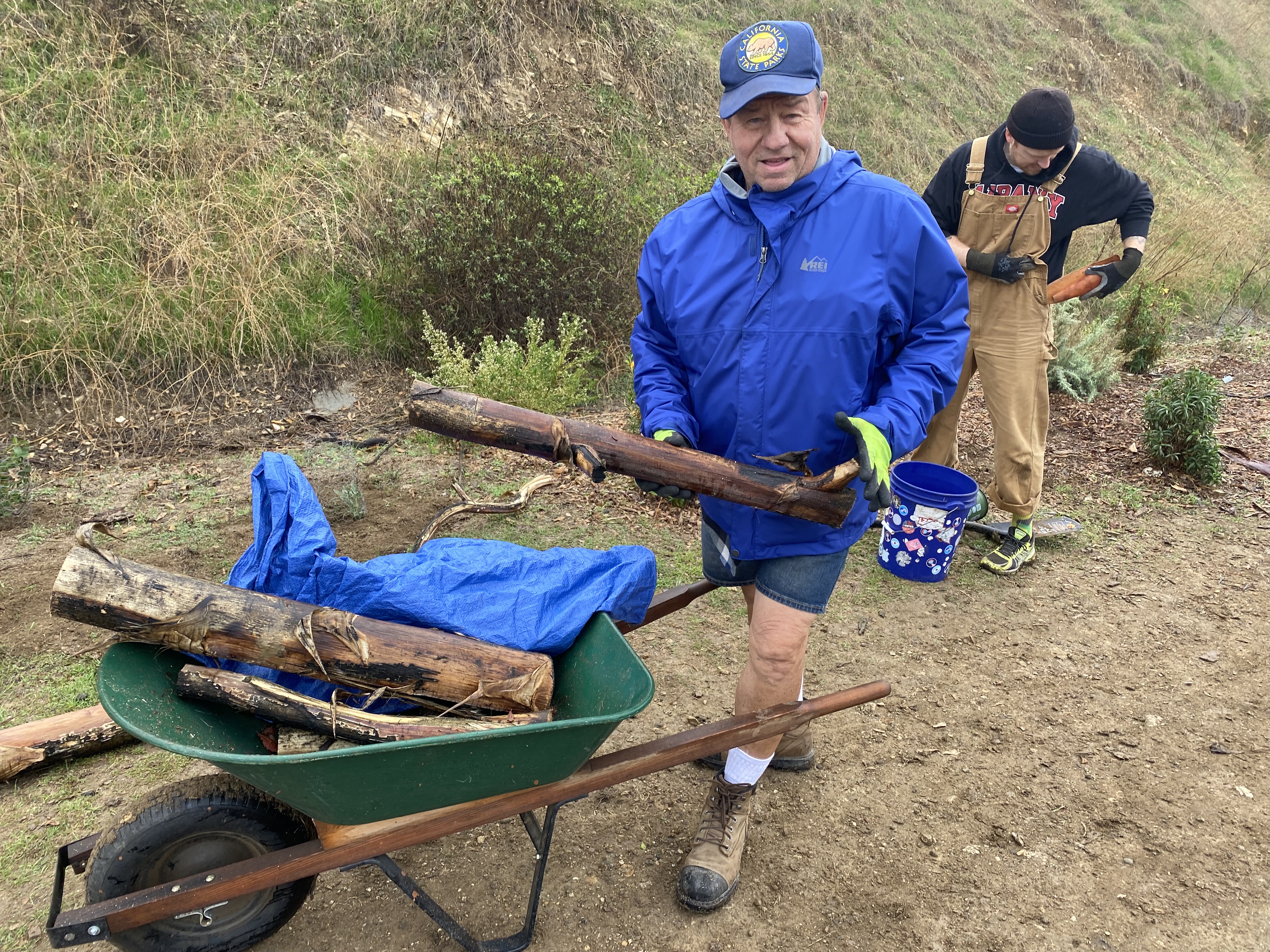

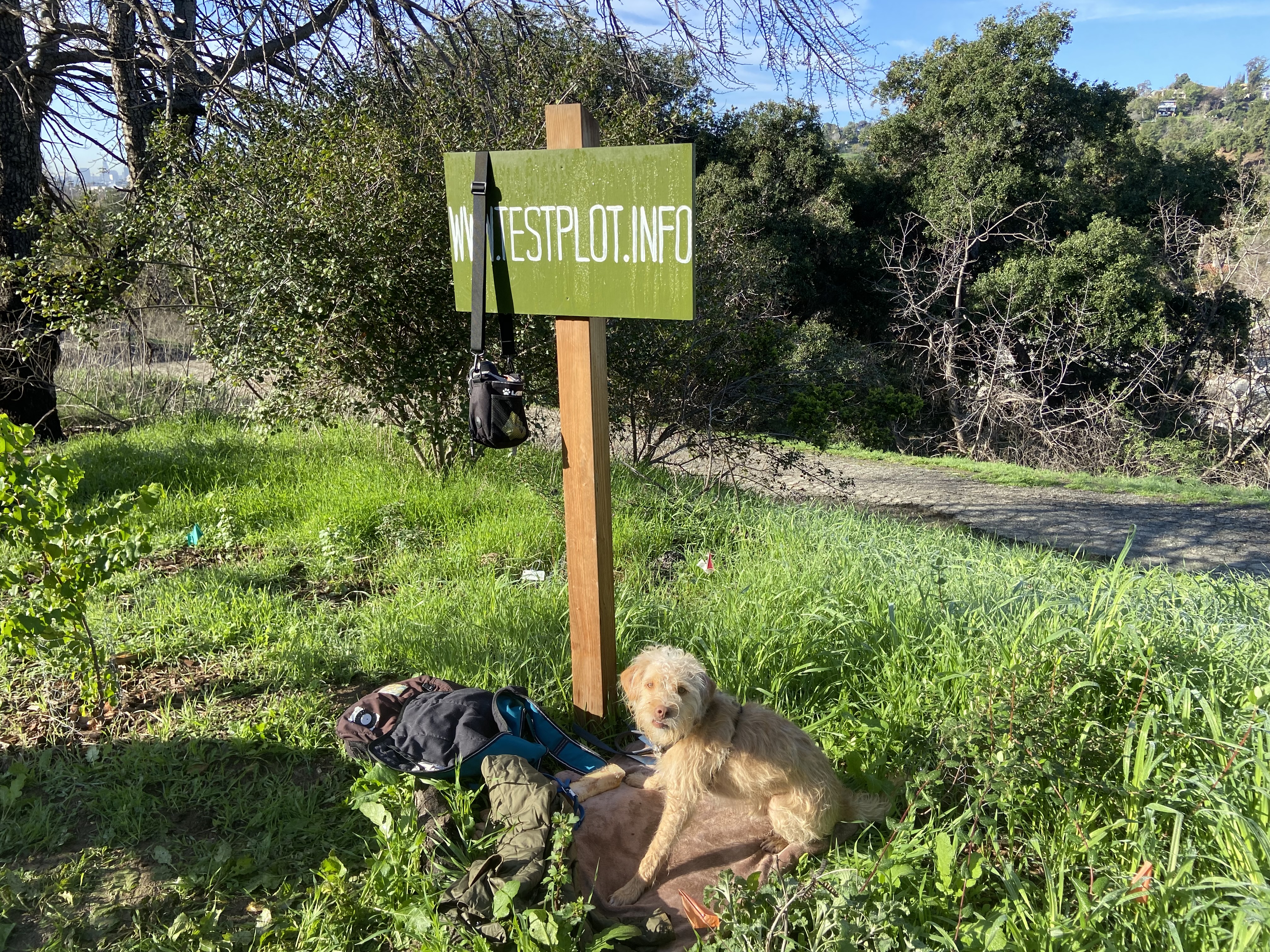
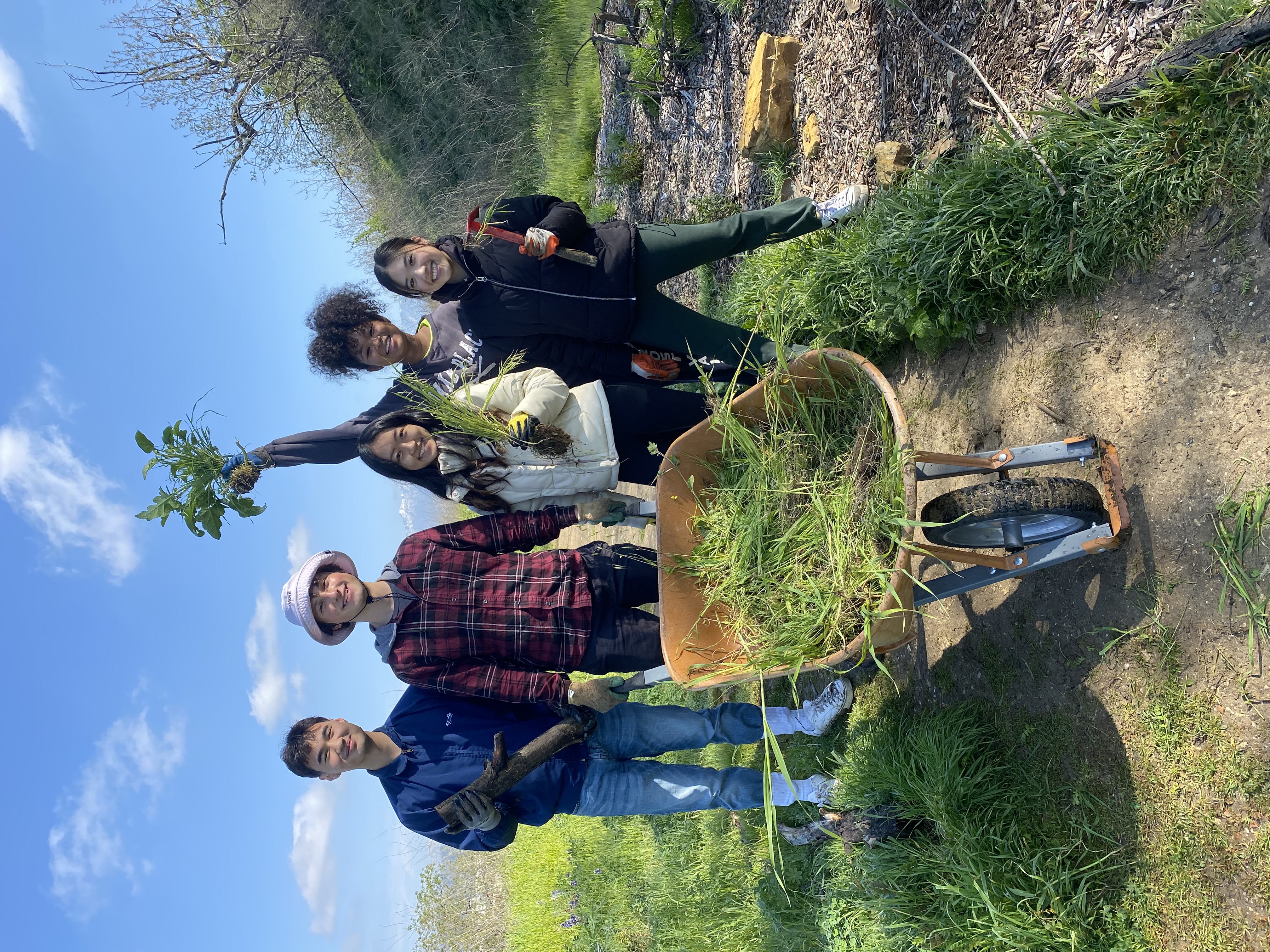
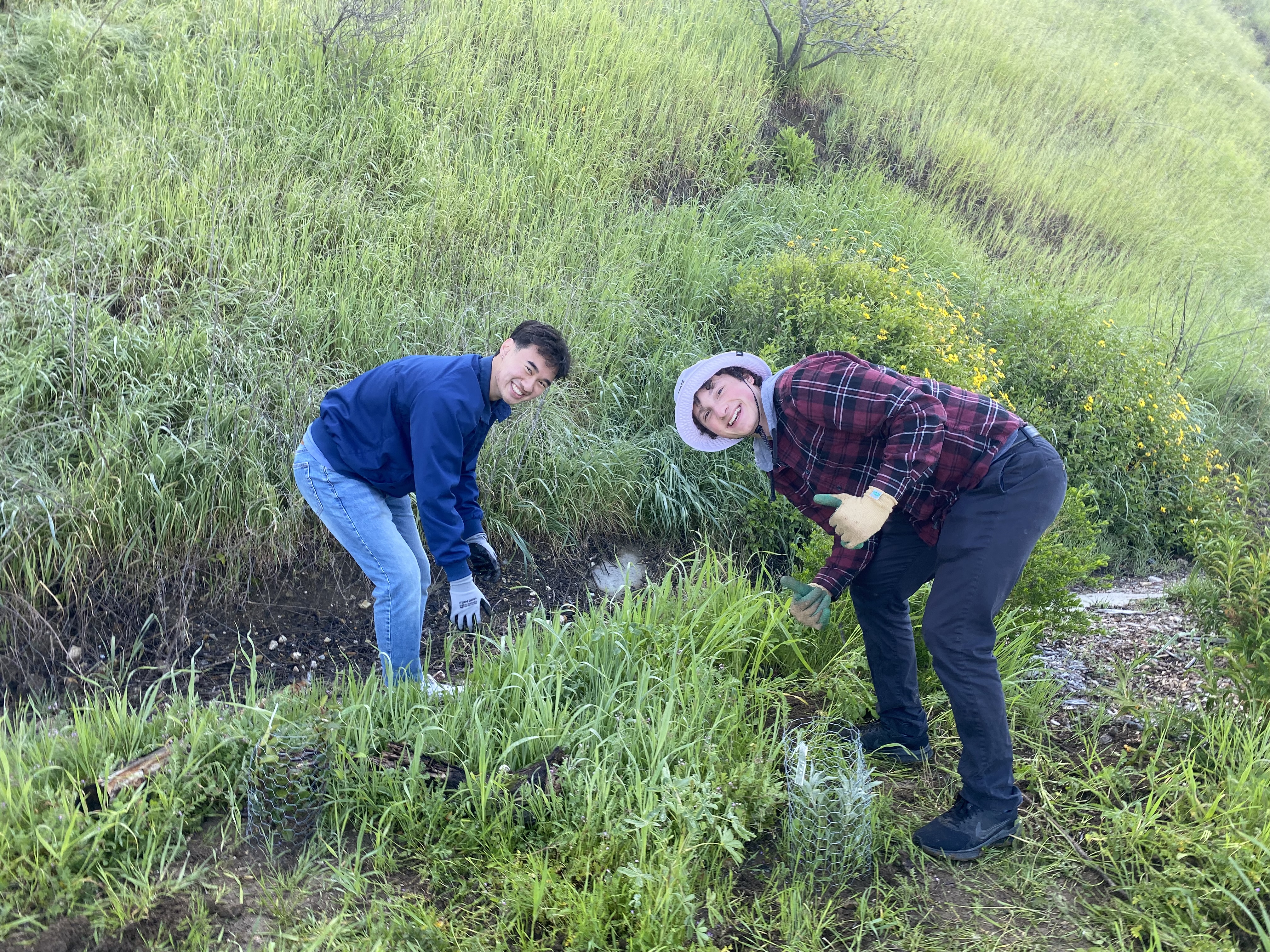
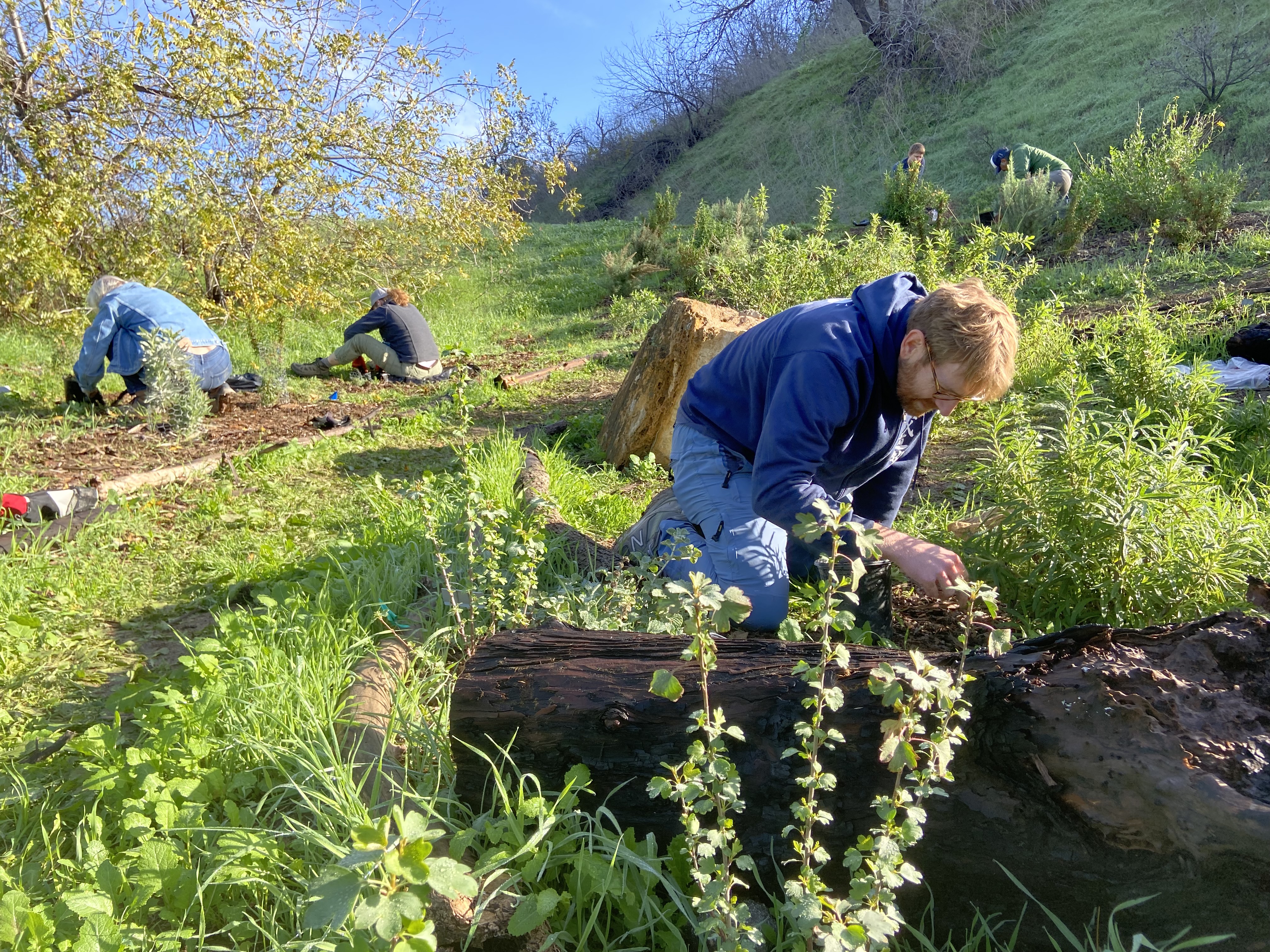
What is the update on your work?
- We have planted 4 sections
-
Rabbits and other animals have eaten some things like the Buckwheat
-
A few plants have been removed
-
Overall everything is doing really well
-
We planted lots of things in gopher cages that were handmade, so the cages go about 12” above ground
-
March 3 we cut the wire away from some of the plants that had started growing through their cages
Did you sheet mulch?
One of our 4 sections was sheet mulched with cardboard and mulch. So far it has been really successful in keeping the weeds at bay.What are you learning?
- Test Plot became an extension to Audubon center’s restoration work in Debs Park. It also provided a physical location for students (New Village Girls Academy) to experience hands-on learning by planting native plants and getting their hands in the soil.
- There’s a lot of value in being invited into an existing community organization because we were able to connect with students we wouldn’t have otherwise had a link to.
- Audubon had established resources including nursery/ locally sourced seeds, tools, mulch and a volunteer list that we were able to access.
-
Coordinating between multiple groups for the volunteer events
- Establishing regular volunteer maintenance schedule
Successes & failures so far?
- Still pretty early to tell
- We planted some shade-tolerant plants under a SNAG (dead tree) that has since been removed to our surprise, so we will see if those understory plants can survive the summer
- The Elderberry is growing more slowly than expected
- The Toyons and Sages are growing fast
- Some of the nice labels installed have been kicked around by the public
Wildlife?
- Lots of birds!
- Ticks
